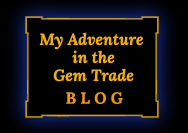Home > Search Results
Search Results
A search for new returned 1 category and 10 links
Pages
Items

Star of David Aquamarine Crystal
Today, remarkably, two important religious holidays are observed throughout the world: Yom Kippur, also known as Day of Atonement, is the holiest day of the year for Jewish people. Eid al-Adha, also known as Feast of the Sacrifice, is celebrated by all Muslims. This year, they both happen to fall on October 4.A Sri Lankan gem dealer once offered me a parcel of rough, aquamarine crystals. It was here in Los Angeles in the early 80’s. The rough crystals were from Nigeria and though interesting for their color, they could not be considered as fine mineral specimens, nor were they clean enough to yield cut stones of gem quality. I examined the parcel and honed in on one particular crystal. The termination of the crystal jumped out and “spoke” to me: a well pronounced, six pointed star, as if someone had carved it onto the end of the crystal, by hand.
Without fanfare, I enquired about the price and without hesitation, I purchased the crystal. Wow. Cool. Into the drawer it went.
I had fun with it. Speculation abounded with regards the potential value of what seemed to be such a rare occurrence in nature. A perfect Star of David in the color of Israel’s flag! After bringing it to my friends at the GIA , it was subsequently reported on and published in the widely acclaimed GIA quarterly journal, Gems and Gemology. I have posted the G&G entry here. The explanation given for the “miracle” was that of "preferential etching”, a natural process of partial dissolution after the formation of the crystal.
Some time after, on a trip to Sri Lanka, a dealer who had seen the Winter 1985 issue of G&G, remarked to me how: “This is a Star of David, and YOU ARE DAVID!!” I’m still not certain whether the dealer even knew what a Star of David signified.
The aquamarine did not impress any of the fine mineral dealers in my circle: ““Not on matrix. Not glassy enough. Not clean enough. No big deal. Who cares?” It is true what they said. There have been other such occurrences of “Stars” on terminations in other minerals, which grow in the Hexagonal System of Crystal Symmetry such as the sapphire referenced in the G&G article.
Most people who saw the crystal were, indeed, fascinated, while others scoffed at the “miraculous” nature of the formation. Nowhere have I understood the meaning behind “Beauty is in the eye of the beholder”, more, than in the gem business.
What finally happened to this controversial piece? Eventually I decided to let it go to a very good home. A diamond dealer named Israel was the fortunate one to acquire the aquamarine, and at a very reasonable price. I wish to him a very Happy New Year and to the Sri Lankan dealer who sold me the crystal, I extend a wish of Eid al-Adha Mubarak!
Tino Hammid Photography
That's the Gem Business!
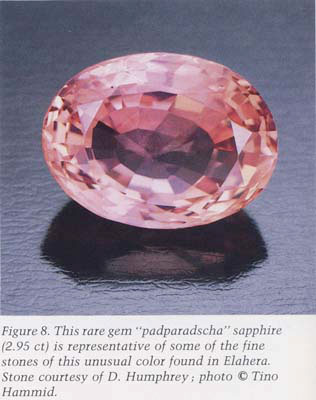 Whatever can be said about the people in the gem business, can be said about people in all fields of human endeavor, for without people, there is no gem business. And where people are concerned, there is often drama.
Whatever can be said about the people in the gem business, can be said about people in all fields of human endeavor, for without people, there is no gem business. And where people are concerned, there is often drama.Countless conversations, amongst gem, jewelry and antiques dealers the world over, to which I have been privy over the years, involve subjects and issues truly unique to those lines of work. I have seen conversations become heated over curious details such as the color, clarity, age, authenticity or provenance of a gem or object. Hours may be spent by dealers discussing the meaning of a single word and whether or not that word can be properly ascribed to a specific item that will be bought or sold; often on the basis of that word alone. Is it not amusing? I think so.
One example that has stuck with me for a long time, mostly because it is an ongoing conversation amongst gem dealers even today is “What is a padparadscha?” The term, padparadscha, is thought to be derived from the Sanskrit word for lotus flower and has been used for over a hundred years in the literature, to describe sapphires that are reddish yellow, orange-yellow, orange-pink or pinkish orange.
It took a 1983 article by a brilliant gemologist; the late Robert Crowningshield to adequately capture the meaning of the term. What he said was this: “If the term is to have merit today, it will have to be limited to those colors historically attributed to padparadscha and found as typical colors in Sri Lanka. It is the opinion of the GIA that this color range should be limited to light to medium tones of pinkish orange to orange-pink hues.” He went on to say, “Deep orangy red sapphires would not qualify as fitting the term padparadscha.”.
One morning in Sri Lanka, after buying a 2.95 carat padparadscha , (pictured here from the Summer 1986 issue of Gems and Gemology), I chat with some dealers about the true meaning of the word. After an hour of going around and around on the subject, one of the dealers raises his finger and asserts - “True padparadscha must be the color of the last sunset”. I feel myself relax. I can feel a breeze on my face. My body says yes. This new definition lends itself to a wide range of colors, which can even include hues of purple and blue mixed in with the pinks, oranges and yellows; the sudden swirl of colors often seen in those final moments just as the sun appears to sink below the horizon. I think, “I’ll buy that!”. This description is the brilliant “last word” on the subject for me and while it doesn’t completely replace the Crowningshield definition of padparadscha, it underscores the rarity that such a pleasing confluence of colors represents when found together in a sapphire.
The conversation finishes that morning when another gem dealer pipes in: “These things are never just black and white. That is the gem business!”
Everyone laughs. I am beaming.
Buying Gold on Cat Street
 This story starts on Cat Street in Hong Kong in 1993. Cat Street, for those who may not know, is in the center of the antiques district next to Hollywood Road. I was in town for the Hong Kong Gem and Jewelry Show. It just so happened, some friends, curators from the Pacific Asia Museum in Pasadena, were also in town, and we met on Cat Street for a day of shopping. On this day, I had my first exposure to gold ornaments from China’s ancient past, bits and pieces on offer, at the various antique shops. The first of these gold pieces I encountered were four small masks, which had functioned as plaques for a belt. They were represented to be 2,400 years old from a period known as The Warring States. That sounded very cool to me!! But frankly I did not have a clue. “Must trust the dealer.” I thought. And so I did. The dealer guaranteed I could return the pieces if not authentic, so I took the plunge. Beginners luck! I went on to buy a number of exquisite pieces from different dealers on that day. Each purchase was an adventure. It was exciting to learn a new vocabulary with exotic history and I felt the wind of good fortune at my back. You might say I felt intoxicated at the prospect of my new discovery of Chinese Gold.
This story starts on Cat Street in Hong Kong in 1993. Cat Street, for those who may not know, is in the center of the antiques district next to Hollywood Road. I was in town for the Hong Kong Gem and Jewelry Show. It just so happened, some friends, curators from the Pacific Asia Museum in Pasadena, were also in town, and we met on Cat Street for a day of shopping. On this day, I had my first exposure to gold ornaments from China’s ancient past, bits and pieces on offer, at the various antique shops. The first of these gold pieces I encountered were four small masks, which had functioned as plaques for a belt. They were represented to be 2,400 years old from a period known as The Warring States. That sounded very cool to me!! But frankly I did not have a clue. “Must trust the dealer.” I thought. And so I did. The dealer guaranteed I could return the pieces if not authentic, so I took the plunge. Beginners luck! I went on to buy a number of exquisite pieces from different dealers on that day. Each purchase was an adventure. It was exciting to learn a new vocabulary with exotic history and I felt the wind of good fortune at my back. You might say I felt intoxicated at the prospect of my new discovery of Chinese Gold. One such adventure involved the acquisition of the magnificent hair ornament pictured here. Feeling quite lucky now, I came into a small shop and asked the gentleman if he had any gold. He brought my attention to a low display case where a piece of metal lied, black as soot and without form - a mangled mess of dingy wires and leaf cutouts. Could it be silver? Certainly not gold, I thought. It looked like a train wreck to my untrained eye. He allowed me to pick the piece up and when I turned it over in my hand a flash of bright yellow caught my eye. – a scratch someone had made to determine that it was, indeed, gold. The piece, whatever it was, had seen better days, but I took a chance. A reasonable price was worked out and it was mine.
Upon my return to Los Angeles, I showed my treasures to a silversmith friend. We set out to understand and restore this flattened, black relic with the yellow streak.
As it turns out, gold does have memory! After the initial ultrasonic washing, the phoenix began to rise. The oxidation vanished, revealing the bright yellow of high karat gold where, with my friend’s patient guidance, the wires and leaf forms wended their way back to their original positions, as intended by the 15th century goldsmith who had made it. The rich symbols took shape as my friend rearranged this “ugly duckling”.
First the Mandarin ducks, symbolizing connubial bliss, were meant to swivel by wires on the hairpiece, “en tremblant”, as the bride, I am told, would likely walk in swing step style. Then we have the open work pomegranates in the center, which are emblematic of fertility and in particular, the birth of numerous sons. Electric blue kingfisher feathers would have been over-laid on the surface of the gold pomegranate leaves - Poetry in gold, now in a private collection.
And what of my very first purchase on that auspicious day on Cat Street? It took over a year for me to get my store credit from the dealer on those "Warring States" belt plaques, as sadly, they turned out to be fakes. But ten wins and only one loss on my first time out, buying gold on Cat Street... Not too shabby!
A Special Necklace
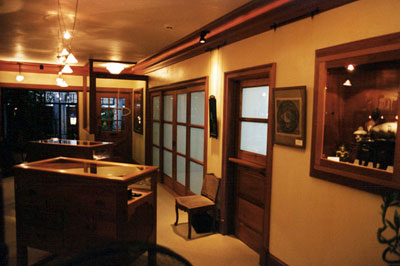 For a decade I owned and operated what I affectionately called - my shop, in Pacific Palisades, California. I offered there, as I do now; a compelling range of fine jewelry together with fine works of art and antiques. Most everyone that would find his or her way into my shop would be thoroughly amazed, especially if they would slow down long enough from their frenetic day to allow for a child like sense of awe and wonder. It is always a good idea to do that, in my opinion.
For a decade I owned and operated what I affectionately called - my shop, in Pacific Palisades, California. I offered there, as I do now; a compelling range of fine jewelry together with fine works of art and antiques. Most everyone that would find his or her way into my shop would be thoroughly amazed, especially if they would slow down long enough from their frenetic day to allow for a child like sense of awe and wonder. It is always a good idea to do that, in my opinion.One fellow that frequented the shop from time to time stands out in my memory. He was bright, sincere and intellectually curious. He began his visits by honing in on the antique Indian jewels or objects on display. He would then ply me for every bit of information I could give him about each piece. He may have been testing to see what I knew about his home country of India.
After a few cordial encounters it became his routine to stop by every few days. On several visits he voiced resentment towards a particular character depicted on Seinfeld, the TV show. He was incensed, convinced that the portrayal of a Pakistani cafe owner in many of the show episodes was based on him specifically. It certainly was plausible given the remarkable similarity between his mannerisms and those of Babu. His visits increasingly turned darker. He would stop by just to rant about different things. I would try to keep the peace, make light and humor him but I drew the line once he made the menacing threat to murder the President of a local University as retribution for an injustice he had suffered at the hands of the President. I cannot actually remember the beef he had or if I ever had a grasp on just what it was. I made it clear to him that such aggressive behavior was not appropriate in my store. For some reason I did not take his threat seriously enough to call the cops. My sense was that he was emotionally confused, but that there was no clear and present danger to anyone really.
He showed up again some days later. My body stiffened anxiously as I let him in but it turned out he had just come to give me a necklace. It was a long strand composed of small, faceted black onyx beads, which he had inherited. He said he would not charge me but that he wanted me to promise to find it a good home. I promised, thanked him and placed the necklace inside a box in the second drawer of my front jewelry case. A friend later informed me that they were traditional Indian mourning beads.
Time passed. The days grew short. Darkness fell early.
In the evenings, in the shop, something special happened. In the evenings, in the shop, the carefully lit displays came into focus. In the evenings, in the shop, the euphony of jewelry and artifacts was magnified. Yoruba woodcarvings stood next to scintillating diamond and moonstone necklaces under the watchful, gouache-on-paper gaze of a gaunt prince of the fourth rank, wearing ermine cap and collar, seated in the large ancestor portrait, which hung on the wall. In the evenings, in the shop, the rare jewels and objects seemed to engage one another in telepathic conversations under the canopy of mahogany and stained glass, masterfully executed by life long friends, designers, Will Ingersoll and Kent Lauer. From inconspicuous speakers, a steady soundtrack of rhythms, melodies and counter rhythms permeated the space.
It was just before Christmas. The face of a young girl appeared at my door and I buzzed her in. She was all of nine years of age, on her own. While many adults found the security doors intimidating, this little girl walked in without a trace of fear. She browsed the displays. The costs, even for the least expensive items, would surely be beyond her reach. She told me she was looking for a gift and asked if I had something she might afford. I asked her how much she could spend. She said ten dollars. She explained that her grandfather had just passed away and she wanted something special to give her grandmother who was sad.
I thought for a minute then remembered and slowly opened the second drawer of the front jewelry case where I stood. I pulled out the necklace that had been left, for which I had promised to find a good home. She approached the case as I held up the long strand of glistening, faceted onyx beads.
How about these, I asked. I placed them on the counter before her. She gazed speechless, fingering the beads. She then looked up at me. I can have these for ten dollars? she asked. I said, you sure can; would you like them gift-wrapped? She nodded. I suggested a special box for the necklace and she approved. The magic of the season was unfolding right before my eyes. She was beaming. I finished boxing and wrapping the necklace for her and put the package into a gift bag. She placed ten dollars on the counter, reached for the bag and said thank you. She then turned around and walked away into the night as I buzzed her out through the door.
Objects of Distinction > John Chan Photomontages

Sunglasses
This smashing photomontage was executed by John Chan in Pre-Photoshop 1986 - New York City
This original work of art measures 20.75 x 13.5 inches
This original work of art measures 20.75 x 13.5 inches
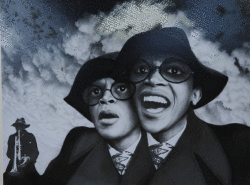
Hugh Masakela 1968
The late Hugh Masakela at the age of 29 (1968) was photographed by John Chan for the New York Times. From this photo session, John created this wonderful photomontage of Hugh's smiling and youthful face (times two) with the backdrop of Masakela as the serious jazz musician he was, playing his trumpet. Close up photo published in the New York Times 1968 This original work of art measures 13.25 x 10.25 inches
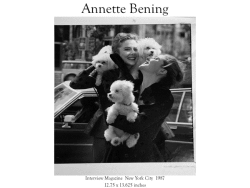
Annette Bening 1987
A delightful photomontage of stellar actor, Annette Bening. John Chan created this show stopper for Interview Magazine in 1987 - New York City. This original work of art measures 12.75 x 13.625 inches
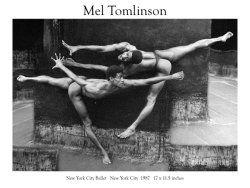
Mel Tomlinson - New York City Ballet
This incredible mirror image of the late Mel Tomlinson, 1949-2019.. John Chan created this when Mr. Tomlinson danced with the New York City Ballet. Of Tomlinson, ballet choreographer Agnes de Mille said that he was "the most exciting black dancer in America" This original work of art measures 17 x 11.5 inches
Objects of Distinction > Period Carvings and Sculpture
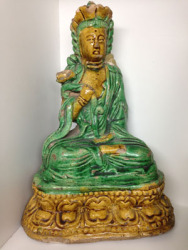
A Ming glazed stoneware figure of a Seated Boddhisattva
A glazed stoneware figure dated to the Ming Dynasty (1368-1644), of a seated Boddhisattva holding a ruyi scepter.
8 3/4" tall
This sublime figure has survived for 500 years and but, for some minor chips, has weathered the ages remarkably well.
8 3/4" tall
This sublime figure has survived for 500 years and but, for some minor chips, has weathered the ages remarkably well.
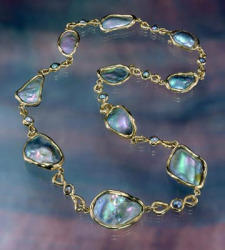
Abalone Pearl Necklace
Simply radiant on any skin tone, this necklace is truly extraordinary. To have a collection of similarly shaped, natural abalone pearls that are flat enough to lie on the neck properly, is a rare triumph. While it can be worn as a chic accessory to any casual outfit (yes, even jeans), this stunning and elegant necklace will complement any attire, from the business suit to the wedding dress. These abalone pearls are luminous and colorful, ultra feminine and quite possibly the loveliest such necklace in existence.
Design: David Humphrey
Design: David Humphrey
